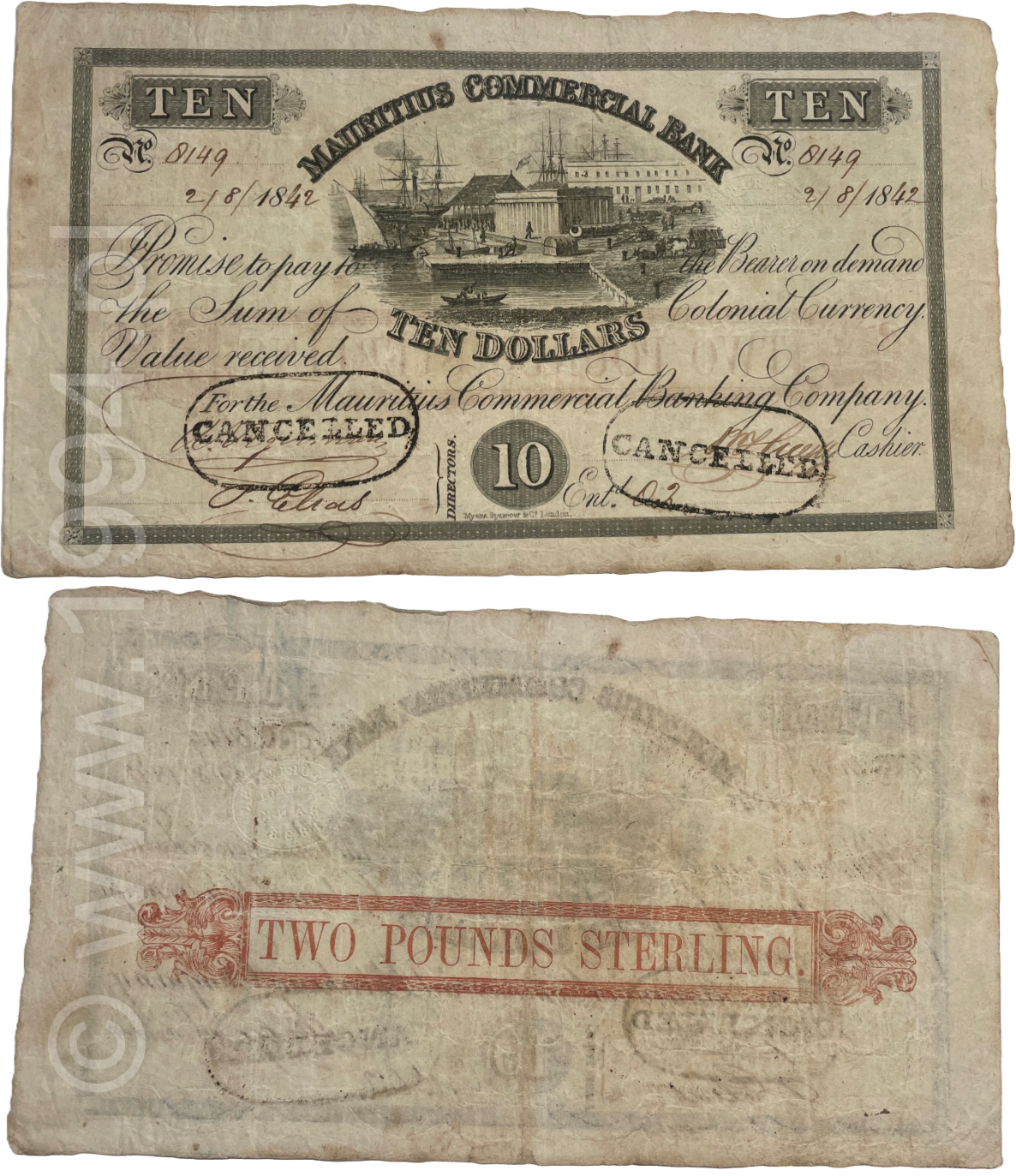Description and research notes
A fully issued, hand-signed, and dated Mauritius Commercial Bank note — one of the earliest known examples of circulating paper money from the island.
Dated 2 August 1842, this note bears manuscript signatures, serial numbers, and the characteristic oval CANCELLED stamps applied upon redemption. The engraving by Myers Frs. & Co. depicts the busy Port Louis waterfront, with ships and warehouses illustrating Mauritius’s role as a maritime trading hub between Africa, India, and Europe.
Unlike the earlier 1839 $20 design, which only mentioned its sterling equivalent on the front, this issue introduced a red reverse overprint reading 'TWO POUNDS STERLING'. That innovation formally established Mauritius’s dual-currency layout, pairing silver-based dollars with their pound-sterling counterparts — a visual and accounting refinement adopted from 1841 onward.
Each note was printed on watermarked paper, completed by hand, and countersigned by bank officials. Surviving examples such as this are among the earliest tangible records of Mauritius’s entry into formal banking and British colonial monetary structure.
